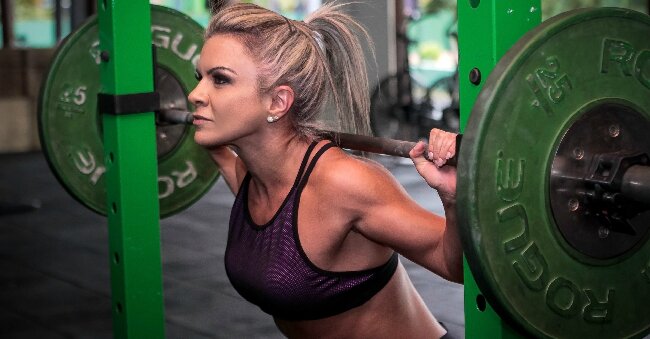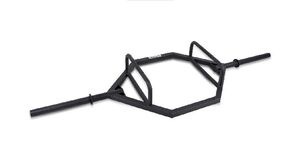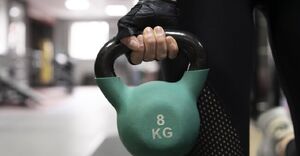
The Evolution of the Standard Barbell: A History Lesson for Fitness Enthusiasts
Have you ever wondered about the origins of the standard barbell?
This article will take you on a journey through the history of this essential piece of fitness equipment.
From its humble beginnings to its modern-day variations, we will explore how the standard barbell has evolved over time.
Learn about the impact of the standard barbell on strength training and the benefits of incorporating it into your workout routine.
Discover the features of a modern standard barbell and essential safety tips for proper use.
Whether you’re a seasoned weightlifter or just starting out, this article has something for every fitness enthusiast.
The Origins of the Standard Barbell
The origins of the standard barbell trace back to the early days of fitness history, where weightlifting and strength training were essential components of physical fitness regimens. This history lesson delves into the evolution of exercise equipment, highlighting the significance of the standard barbell as a pivotal training tool for fitness enthusiasts.
What was the First Barbell Like?
The first barbell was a simple yet effective piece of exercise equipment used primarily for weightlifting and resistance training. It consisted of basic weight plates and a rudimentary bar design.
These earliest barbells were typically made using materials such as cast iron or stone for the weight plates and a wooden or metal bar. The design allowed for adjustable weight configurations by adding or removing plates as needed, providing a versatile workout experience. As resistance training gained popularity, the barbell’s functionality evolved with the introduction of different weight plate variations, including round, square, and hexagonal shapes. This pioneering design not only shaped the early foundations of strength training but also influenced the development of modern exercise equipment as we know it today.
Who Invented the Standard Barbell?
The invention of the standard barbell is attributed to pioneers in fitness history who recognized the need for specialized exercise equipment to enhance strength development and muscle building.
These historical figures and fitness enthusiasts played a crucial role in revolutionizing the fitness industry by introducing innovative gym equipment like the standard barbell. Their contributions paved the way for advancements in strength training tools, benefiting athletes and fitness enthusiasts worldwide. The impact of these innovations extended beyond physical health, influencing athletic performance in various sports disciplines. By promoting structured, targeted exercises with the standard barbell, they catalyzed a shift towards more effective training methods and performance enhancement strategies within the fitness community.
The Evolution of the Standard Barbell
The evolution of the standard barbell has been a journey marked by continuous innovation and adaptation to changing fitness trends and gym culture. From the early days of basic weight plates to the modern Olympic barbell, this exercise equipment has undergone significant transformations.
How Has the Standard Barbell Changed Over Time?
Over time, the standard barbell has evolved to incorporate cutting-edge fitness technology and innovative weightlifting techniques, becoming a cornerstone of strength and conditioning programs worldwide.
The evolution of the standard barbell has been heavily influenced by advancements in exercise science and the growing emphasis on functional training. Manufacturers have developed barbells with improved grip textures, bearing systems for smooth sleeve rotations, and high-quality construction materials such as stainless steel and high-grade alloys. These enhancements not only enhance the lifter’s experience but also contribute to improved durability and longevity of the equipment. The design of modern barbells caters to various training methodologies, allowing for targeted muscle engagement and more dynamic workout routines.
What Materials Were Used to Make Early Barbell Designs?
Early barbell designs were crafted from durable materials such as iron and steel, reflecting the rudimentary yet robust approach to exercise equipment design and barbell manufacturing prevalent in that era.
The manufacturing processes involved in the early barbell designs consisted of skilled artisans forging these weightlifting tools with precision. The incorporation of iron and steel not only provided the necessary heft for strength training but also showcased the craftsmanship of the era.
As the understanding of exercise mechanics evolved, so did the composition of weight plates. The transition from solid metal discs to adjustable plates allowed for more versatile workouts and customization options, laying the foundation for modern barbell sets.
The Impact of the Standard Barbell on Fitness
The standard barbell has had a profound impact on fitness through its role as a versatile workout gear essential for strength development, muscle building, and overall physical fitness enhancement. As a fundamental training tool, the barbell has revolutionized workout regimens and exercise philosophy.
How Did the Standard Barbell Revolutionize Strength Training?
The standard barbell revolutionized strength training by setting new standards for fitness inspiration and workout history, fueling the progression of strength development and fitness culture over the years.
Its versatility in targeting various muscle groups and accommodating a wide range of exercises has made it a cornerstone in many workout routines. Not only does the barbell promote muscle growth and strength gains, but it also fosters a sense of community and camaraderie among those who frequent the gym. As individuals strive to lift heavier weights and achieve new personal bests, they push the boundaries of their own capabilities and redefine what is possible in terms of physical fitness. This continual challenge and growth fostered by the barbell have helped shape the trajectory of exercise science and raised the bar (pun intended) for fitness enthusiasts worldwide.
What Are the Benefits of Using a Standard Barbell?
Using a standard barbell offers numerous benefits, including enhanced fitness motivation, improved muscle functionality, and better physical health outcomes. Its impact on workout evolution and fitness trends is undeniable.
The versatility of the standard barbell allows for a wide range of exercises that target different muscle groups, contributing to overall strength and endurance.
Incorporating the barbell into fitness routines can lead to increased calorie burn, aiding in weight management and promoting a healthier body composition.
The sense of accomplishment and progress achieved through advancing in barbell weights can significantly boost self-esteem and confidence, motivating individuals to continue pushing their limits and striving for fitness goals.
The Modern Standard Barbell
The modern standard barbell embodies cutting-edge design principles that prioritize exercise equipment utility, fitness inspiration, and innovative fitness technology integration. It represents a pinnacle of barbell mechanics and exercise equipment advancements.
What Features Make Up a Modern Standard Barbell?
A modern standard barbell comprises a range of innovative components that cater to the dynamic needs of fitness enthusiasts, reflecting the evolving trends in exercise equipment design and fitness lifestyle preferences.
These key features make the modern standard barbell a versatile tool for users of all levels, from beginners to seasoned athletes. The durability of the barbell allows for heavy lifting and intense workouts without compromising its structural integrity. The adaptability of the barbell to various exercise dynamics enables users to engage in a wide range of movements, such as squats, deadlifts, and bench presses, enhancing overall strength and muscle development. The combination of these components ensures that the modern standard barbell is a fundamental piece of equipment in modern fitness settings.
What Are the Different Types of Standard Barbells Available Today?
Today, fitness enthusiasts have access to a wide range of standard barbells tailored to diverse training needs and preferences. These barbells reflect the principles of weightlifting and the evolving standards in the fitness industry.
From Olympic barbells designed for powerlifting and heavy lifting to women’s barbells with a smaller diameter for improved grip, the market offers a plethora of options.
Standard barbells with varying grip textures cater to users looking for comfort and control during their workouts. Specialty barbells like the squat bar and deadlift bar serve specific functions in strength training programs, highlighting the versatility these tools bring to fitness education and training routines.
Proper Use and Safety Tips for the Standard Barbell
Understanding the proper use and safety guidelines for the standard barbell is crucial for maximizing workout efficiency, ensuring strength training effectiveness, and minimizing risks associated with gym equipment mechanics. Prioritizing safety while utilizing the barbell is paramount.
How to Properly Load and Unload a Standard Barbell
Properly loading and unloading a standard barbell requires an understanding of its components, the latest exercise equipment technology trends, and adherence to best practices in gym safety protocols. Mastery of these techniques ensures optimal workout performance.
With the evolution of exercise equipment technology, advancements such as quick-release collars and ergonomic grip designs have made handling barbells more efficient and user-friendly.
Familiarity with the barbell’s knurling, sleeves, and collars enables individuals to securely load and unload weights, reducing the risk of injuries during lifting sessions.
By incorporating these modern innovations into their workout routines, fitness enthusiasts can maximize the effectiveness of their strength training regimens while prioritizing safety and precision in each movement.
What Safety Precautions Should Be Taken When Using a Standard Barbell?
Using a standard barbell safely involves an understanding of exercise equipment mechanics, gym equipment safety standards, and current fitness industry trends that prioritize user well-being and injury prevention. Implementing proper safety precautions is essential for a productive strength training session.
It is crucial to always inspect the barbell for any signs of wear and tear before use, checking for loose screws or any damage that could compromise its integrity.
Proper form and technique are paramount; ensure that your grip is secure and wrists are in a neutral position during exercises.
When loading or unloading weights, make sure the barbell is balanced with equal weight on each side to prevent potential accidents or strain.
Keeping the workout area clear of obstacles and using collars to secure weight plates can help prevent slipping or falling weights.




No Comments